The award-winning photojournalist broke gender barriers and was the first American female reporter killed in combat in Vietnam.
-
Fall 2023
Volume68Issue7
Editor's Note: Cultural critic and historian Lorissa Rinehart writes about art, war, and politics. She adapted the following from her recently published book, First to the Front: The Untold Story of Dickey Chapelle, Trailblazing Female War Correspondent. We thank the Wisconsin Historical Society for preserving a collection of Chapelle's photos, many of which appeared in their book, Dickey Chapelle Under Fire: Photographs by the First American Female War Correspondent Killed in Action, by John Garofolo.
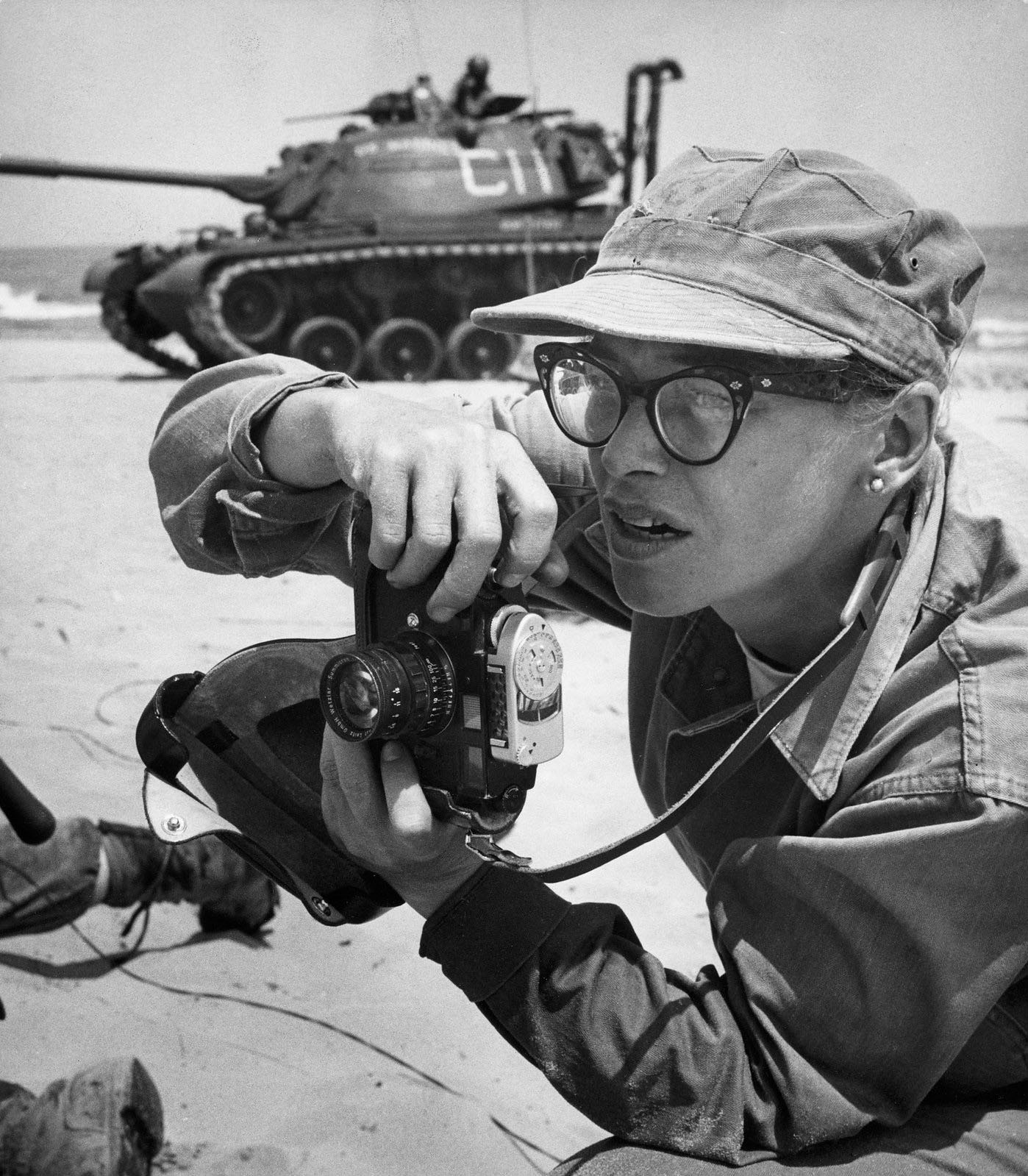
She didn’t have much time. They would be leaving soon. In the next room over, she heard the names of familiar drop zones as the commanders debated where they should jump after the sun went down. Their tone anticipated enemy resistance. The chop of an incoming helicopter thundered outside as she lit another cigarette at her typewriter. She had to get the story out.
“Dear Hobe,” she wrote her editor, “This letter is a try at reporting to you what I’ve been doing and thinking. Mostly for my sake, I’ll try to put down in words a point of view from which I’ll be drafting copy later this week. The subject matter of the copy will be some 5,000 people on our side, the Vietnamese Airborne Brigade. I can’t imagine that most Americans know they exist; no reporter (man or woman, Viet or US) was ever permitted to go out on their operations before. Yet the five weeks—no, it’s six now—that I’ve spent with them have been as unforgettable an adventure as I have ever had in my life.”
In the autumn of 1961, Georgette “Dickey” Meyer Chapelle made seven jumps with the Vietnamese Airborne Brigade, slept seventeen nights in the field, came under fire seven times, and marched over two hundred miles through head-high jungles and knee-deep streams. She patrolled the Ho Chi Minh Trail along the Cambodian border with them; photographed them fighting with bravery and valor; watched them die in agony, and got up the next day with the survivors to begin their battle again.
Blond, petite, and hailing from a sleepy suburb outside Milwaukee, Wisconsin, Dickey might have seemed an unlikely figure to be making camp with South Vietnam’s finest, let alone to be the first reporter of any gender to have the honor of being credentialed with the Airborne. But fighting men had welcomed her since World War II when, with equal parts grit and compassion, she covered America’s armed servicemen giving their last full measure of devotion at Iwo Jima and Okinawa.
Because of her hard-won reputation for being as tough as a Marine, and with a soft spot for freedom-fighters, the Airborne seamlessly integrated Dickey into their ranks. They even designed a special parachute for her with extra pockets to hold her film. But, since first touching down in enemy territory, she saw with perfect clarity what few Americans were willing to admit for years to come. There was a full-blown war raging in Vietnam and one that America, along with its South Vietnamese allies, was losing. Hampered by conventional tactics and a lack of meaningful support from their American allies, the Vietnamese forces were no match for the Viet Cong guerrillas who gained ground every night.
Read vivid memories of working with Dickey Chapelle
by Bill Garrett, her editor at National Geographic, reprinted
in this issue, “What Was a Woman Doing There?”
Even in those early days, Dickey understood Vietnam as a pivotal battleground in the Cold War. But, more importantly, she saw it was a moment of monumental consequence for the men and women of Southeast Asia who were fighting for their sovereignty. More than most, Dickey knew the consequences of defeat at the hands of a brutal communist regime.
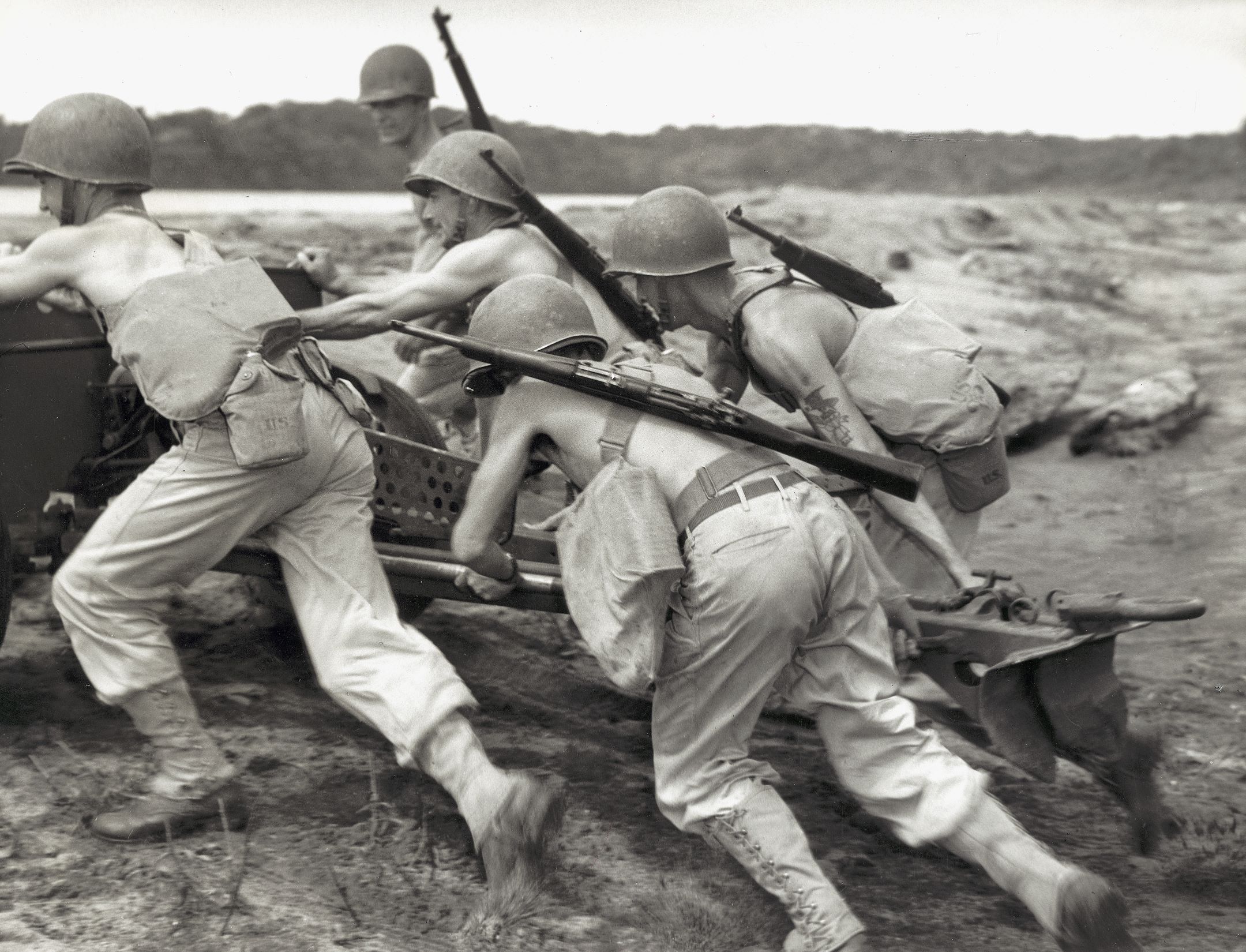
During the late 1940s, she witnessed the inception of the Cold War in the rubble pits of postwar Europe. Along with her then- husband, Anthony “Tony” Chapelle, she worked as a documentarian for numerous international-aid organizations while living out of the back of a retrofitted baby-food delivery truck for months at a time. In war-ravaged capitals, she interviewed families who made a home in former bomb shelters. In the countryside, she hiked miles to remote communities that had been all but cut off from desperately needed supplies. Few were willing to go to such lengths to demonstrate the true cost of international peace through international war, and, perhaps more than any other single documentarian, Dickey created an exhaustive portrait of postwar Europe.
It was this unique vantage point that enabled her to analyze the emergent Cold War with an uncommonly nuanced understanding. While her contemporaries often described this conflict in outdated dualistic moralities of good and evil, us and them, the USSR and the USA, Dickey recognized the granular, human element at work within the wider geopolitical landscape. Having lived with the starving, the exhausted, the psychologically traumatized men, women, and children of postwar Europe, she well understood how the Soviets used the promise of peace and prosperity to tighten their vice grip of oppression.
She was also one of the few to acknowledge the heroic strength of those who mounted yet another resistance to tyranny, even after so many years of hardship during World War II. It was reporting on this renewed fight for freedom within the context of the wider Cold War that defined Dickey’s career.
Yet, acting solely as a reporter and documentarian struck Dickey as increasingly insufficient as the Cold War progressed. More and more, she did what she could to directly intervene. Such was the case in revolutionary Hungary, where fighters battled the repressive Soviet-backed regime in the streets of Budapest.
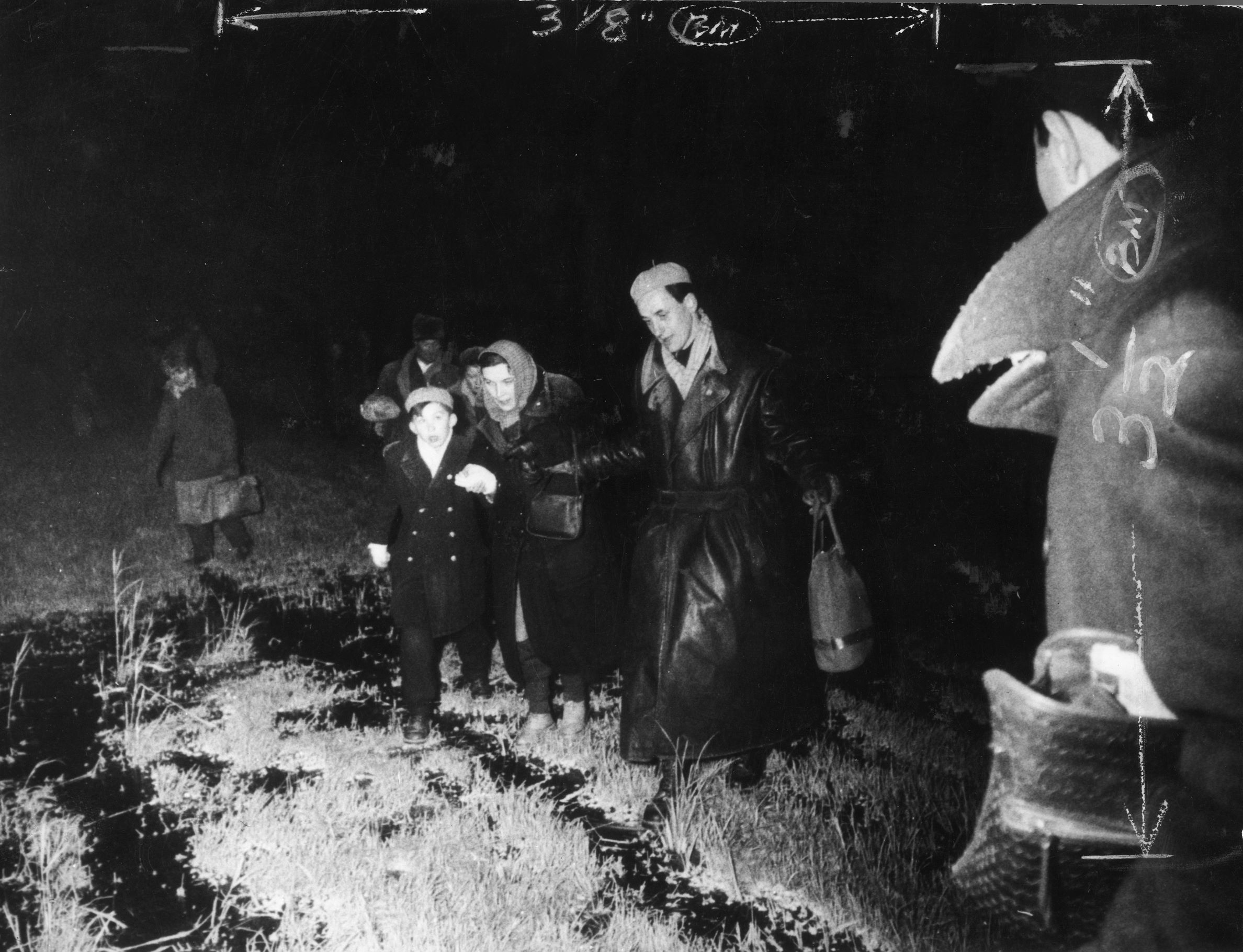
In the wake of this brutal urban warfare, thousands fled across the frozen tundra by night to Austria, and Dickey was there to cover the humanitarian crisis for Life magazine. But, for all those fortunate enough to cross over, more were stranded just a few thousand yards from their goal, lost in the icy darkness or pinned down by machine-gun fire and tracer rockets. For weeks, Dickey ventured into Soviet-controlled territory to help guide those refugees that last mile to freedom.
As the Pulitzer Prize-winning author and journalist James Michener, who often accompanied her on such dangerous missions of mercy, later recalled: “On the frontier, Dickey and I sometimes went far behind the Russian lines. I was cautious; she was totally fearless. I would draw back from spots of danger; she would always crowd forward. I was older than she; she, more experienced. It was her first time in the situation, yet she was quite extraordinary in her personal courage.” She saved “hundreds, maybe. If she were a man, they would have called her a hero.”
Her bravery came at a cost. While trying to deliver life-saving penicillin to resistance fighters, Dickey was arrested at gunpoint by Soviet border guards and then held in solitary confinement at Budapest’s infamous Fö Street Prison for five weeks. She emerged deaf in one ear and suffering from post-traumatic stress disorder. Her devoted family, and her own iron will, helped her to recover in less than a year.
But her experiences had changed her indelibly, and the fire that fueled her drive to document the fight for freedom for everyone, everywhere, burned with that much more heat. Simultaneously, the Cold War burst into flames across the globe through limited wars of independence. Dickey did whatever it took to get the story, every time, at any cost.
She became the first Western journalist to gain accreditation with the Algerian Liberation Front and spent a month covering their campaign against French colonial rule. She was the first Western female reporter to march with the Cuban Revolutionary Army. She was the first woman given permission to paratroop with the U.S. 82nd and 101st Airborne Divisions. Later, she became the first female reporter to be stationed with covert American special forces in Laos.
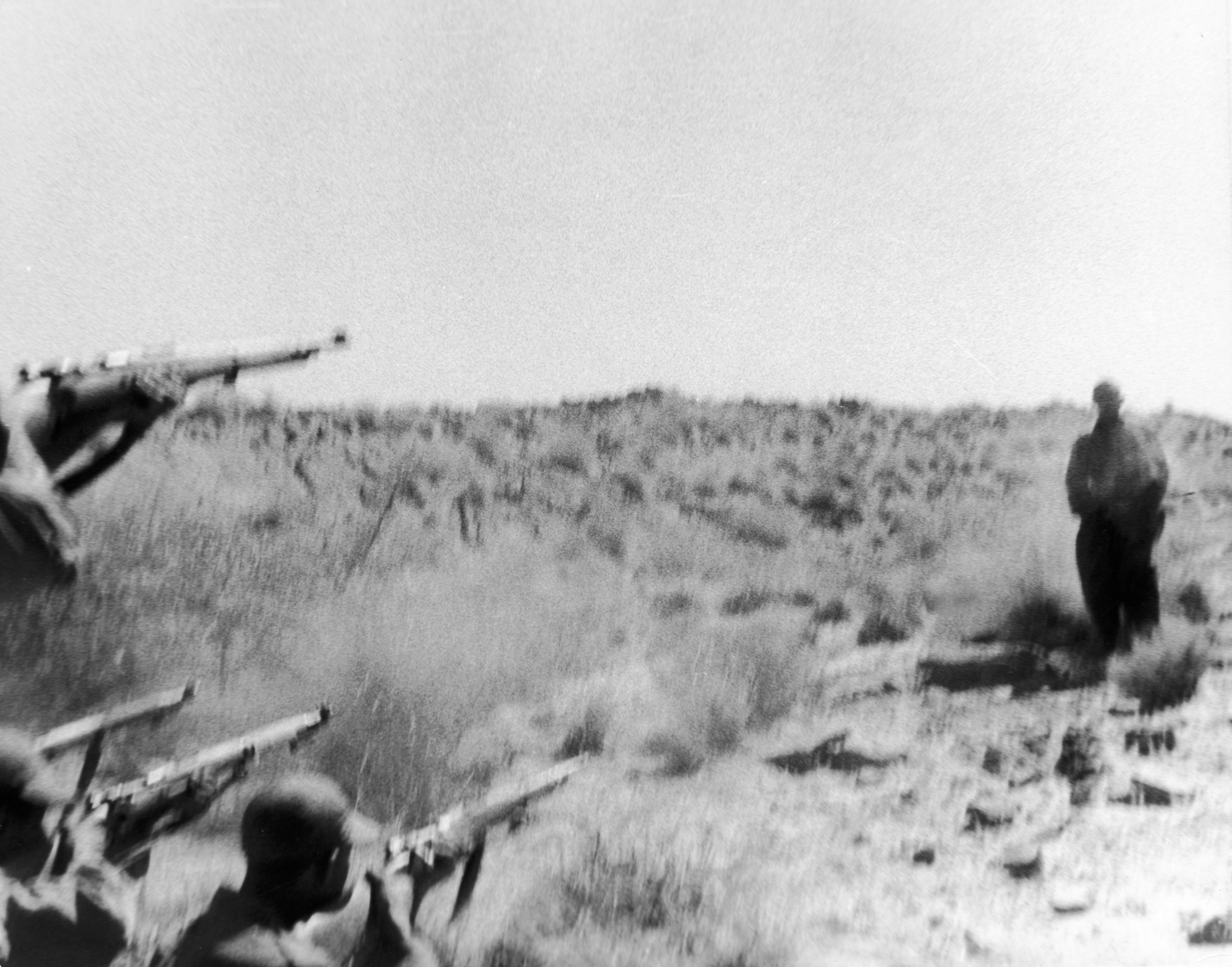
But it was in Vietnam that she saw the greatest need to bridge the ever-widening gap in empathy and understanding between America and its allies. She became the first correspondent of any gender to live with anti-communist guerrilla forces in the Mekong Delta and the first to jump with the South Vietnamese Airborne. Later, she would become the first female reporter to go on patrol with the First and Third Battalions of the Seventh Marines Regiment that were among the initial US combat troops sent to Vietnam in 1965.
Dickey’s experiences led her to believe that, more than any other Cold War conflict she had covered, the battle for this Southeast Asian nation was a moment of decision not just for the United States, but for the free world whose boundaries were eroding by the day.
Nor was she blind to her own country’s complicity and even participation in undermining the cause of liberty. She became one of the first and one of the few to speak out against the rampant anti-Asian racism that ran through US policies from the first days of the Vietnam War. She did so publicly in her writing, privately in confidential memos to top military leaders, and directly to commanding officers in the field.
As her colleague and friend Joseph Galloway recalled, he and Dickey were once witnesses to the abuse of suspected Viet Cong soldiers. The Marines who had arrested them tied their hands behind their back with wire, blindfolded them, gagged them, surrounded them in a pen of razor wire, then had two guards point their rifles at them.
As Galloway described it, “Ms. Dickey looked at that and went berserk. The gunnery sergeant who was in charge of this platoon, she drew herself up him . . . and she got right in his face and she ate him a new one. Sarcasm was dripping from her. She yelled: 'Are you sure you have good-enough control of these dangerous prisoners? Don’t you think you should get some camo wire and tie their feet together?'” She then photographed these egregious abuses.
When he later asked her why she had reacted so vehemently, Dickey told him that she, too, had her rights violated as a prisoner of war and that America would lose if it continued down this dark road. Her insight could not have been more prescient or tragic.
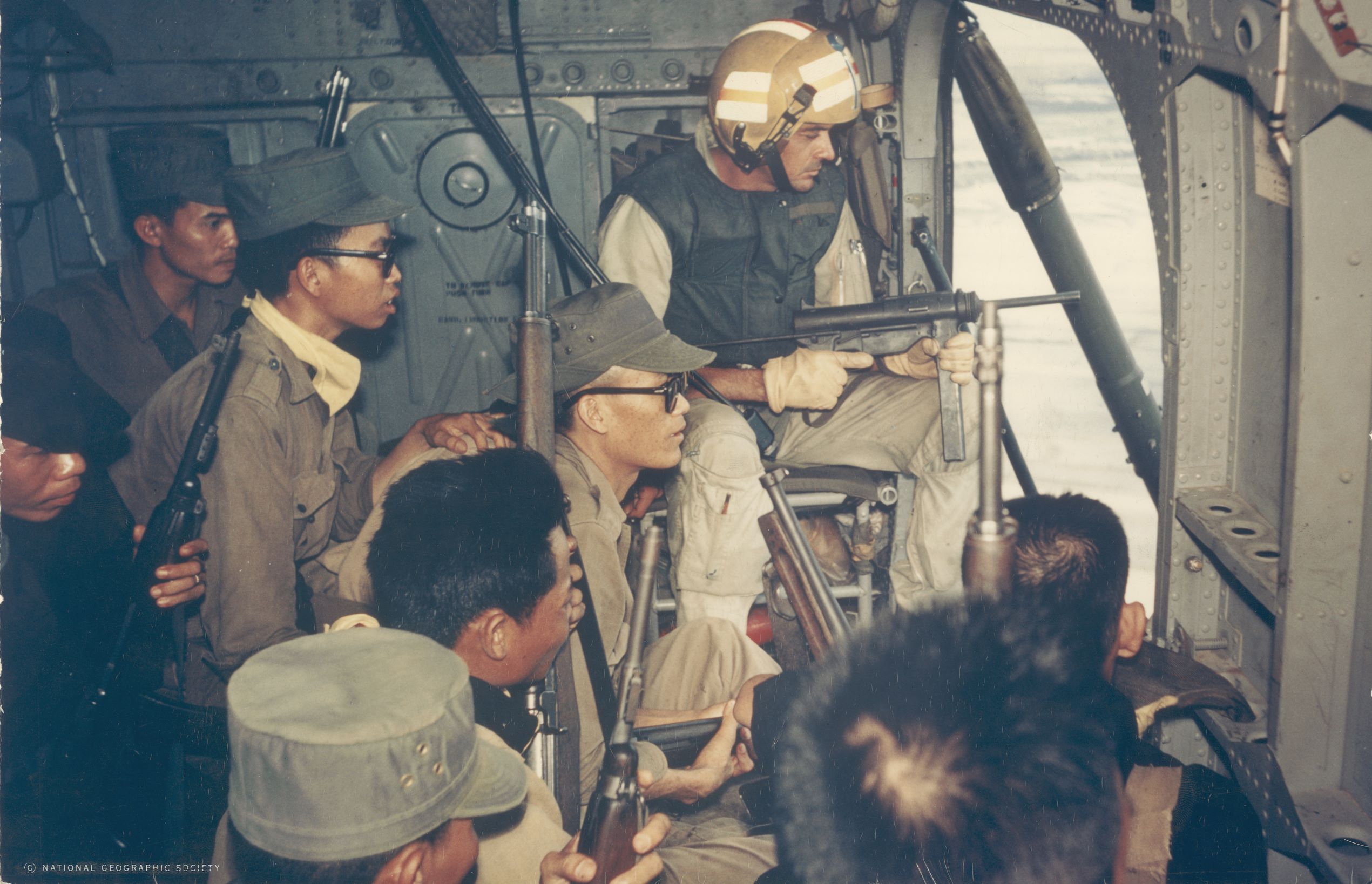
By every right, Dickey Chapelle should be a household name. Throughout her career, which spanned the length and breadth of the early Cold War, her capacity to march beside fighting men, regardless of creed or color, made her insights singular. Her commitment to human rights, equality, and social justice made her reporting invaluable. The stories she brought back from the last days of World War II to the first days of the Vietnam War continue to shed new light on the evolution of that war and on Cold War history.
Yet, while she was alive, and after she died (the first American female journalist to be killed in combat, which happened on November 4, 1965), Dickey’s fellow journalists dismissed her uncomfortable relevance. They accused her of being obsessed with military life, of being overly consumed by her career, and of being incapable of objectivity. For decades, their arrows stuck, relegating her to obscurity. But it was precisely those attributes that made her such an extraordinary reporter, and such a relevant voice now.
Dickey was obsessed with military strategy, tactics, deployments, morale, and esprit de corps. Having spent so many years reporting on the Cold War’s low-intensity conflicts, her real specialty lay in guerrilla-warfare tactics, about which she wrote for some of the world’s premier journals, magazines, and newspapers. Because she was an expert in her field, military leaders, including the Joint Chiefs of Staff, often consulted her on their upcoming campaigns and long-term policies.
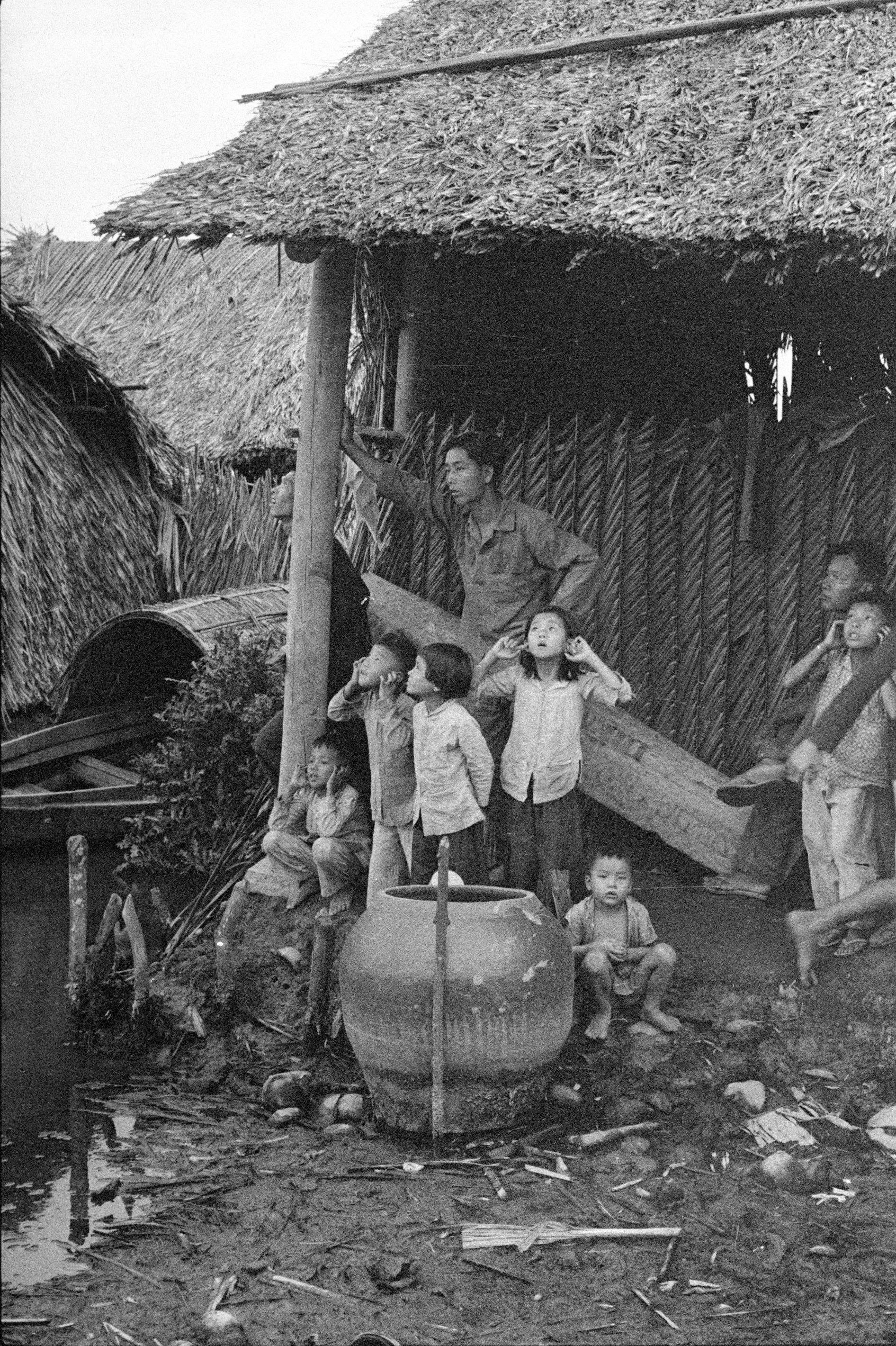
That she was consumed by her career also rang true, especially after she divorced her husband, Tony Chapelle. Naïve, new to New York City and the world of international journalism, Dickey married Tony when she was twenty; he was more than twenty years her senior. From the start, their relationship was far from stable, and Dickey’s continued success aggravated Tony, a deeply insecure individual who could not keep up with her ever-more-frenetic pace as the years passed.
When his drinking developed into alcoholism and he got addicted to other drugs, he became verbally and emotionally abusive. At 34, Dickey took legal steps to extricate herself from an increasingly toxic and dangerous relationship. She never had a serious romantic partner again. However lonely she was, her career flourished in these years of solitude. Besides, she took a lover when she wanted.
Her supposed lack of “objectivity” lies at the heart of Dickey’s legacy. During the early days of the Cold War, most journalists were content to receive their information from government sources in hotel bars and press conferences, then print it, without question. And this, to a large degree, was what passed as “objectivity.” Dickey had no interest in this kind of dispassionate distance that favored the point of view of the wealthy and powerful. In her mind, such journalism couldn’t be further from actual objective reporting.
Instead, her instinct led her to be immersed in the story and to prioritize the voices, the lives, and the experiences of those she reported on. She spent days, weeks, sometimes even months pursuing a story in the field. She slept in Bedouin tents in the Algerian desert and in the foxholes she dug herself in the hills overlooking Beirut. She rode in picket boats between battleships off the coast of Iwo Jima and flew in a nuclear-armed jet stationed on aircraft carriers in the Aegean Sea.
On New Year’s Eve 1958, Dickey patrolled the Soviet border with the Turkish infantry. On New Year’s Day in 1959, she photographed Fidel Castro’s army as they entered Havana. She jumped out of planes over America, the Dominican Republic, South Korea, Laos, and South Vietnam. She heard bullets flying over her head in Asia, North America, Europe, and Africa, and knew that they all sounded the same.
She did this because there was no substitute for seeing the story with her own eyes. Indeed, in letters and lectures to aspiring young journalists, she always extolled the imperative of seeing the story for oneself, rather than relying on the accounts of others. She had wanted to title her autobiography With My Eyes Wide Open.
As the Cold War intensified, Dickey leaned further and further into her unique brand of journalism. Meanwhile, her editors pushed back with increasing frequency, asking her to remove herself from the story and to describe those she reported on in easy-to-grasp stereotypes, rather than as the complex individuals she encountered. She fought back every time, never straying from her journalistic ethics, never abandoning what she knew to be her job as a correspondent—to report the truth as she saw it, firsthand.
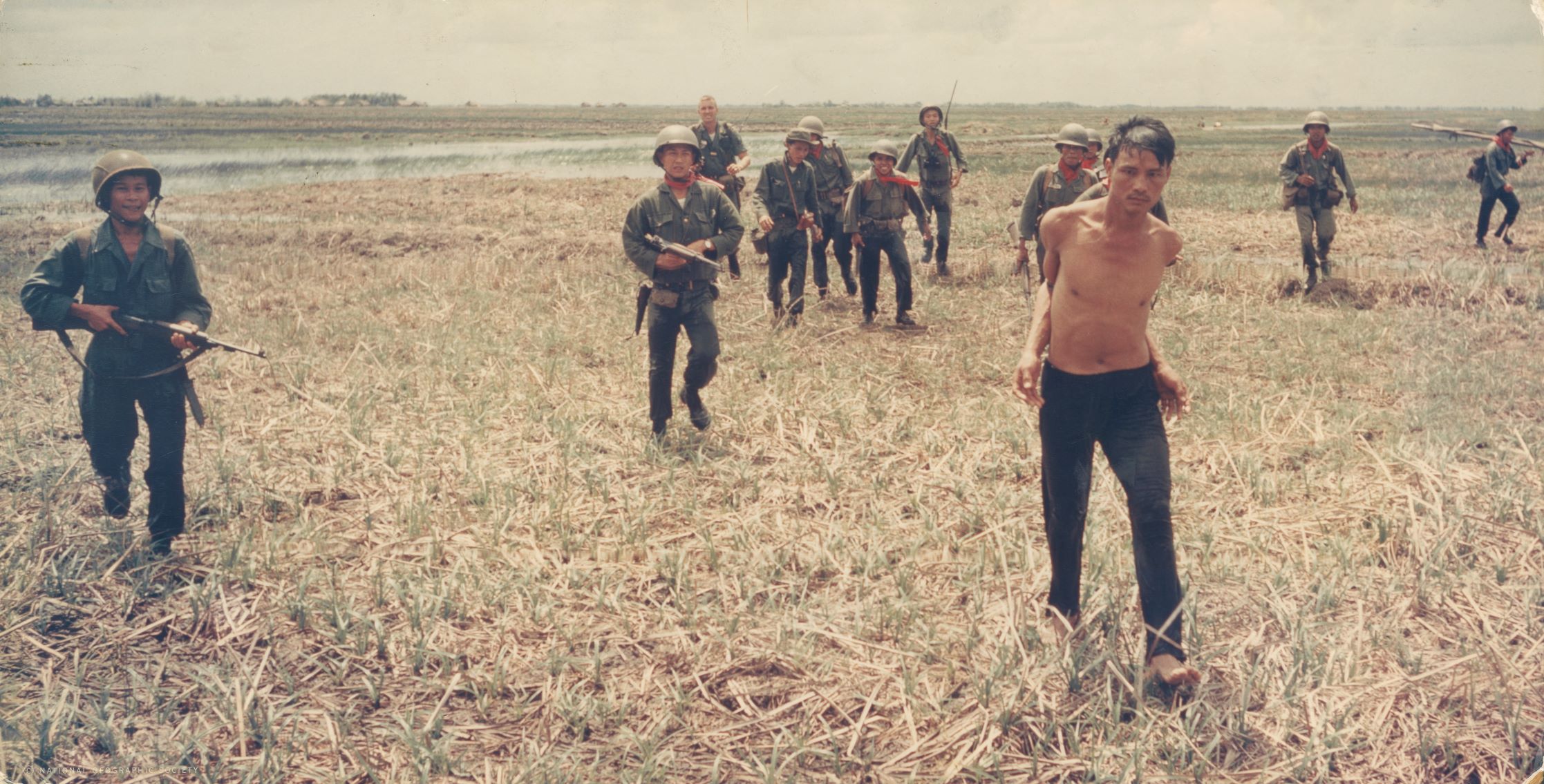
The world would catch up to her.
But, in the autumn of 1961, Dickey was too far ahead of her time for most to comprehend. And, from the vantage point of Tan Son Nhut Air Base in Saigon, she knew where history was headed.
The voices from the next room tapered off. Boots thundered down the hallway. She hurriedly finished her letter to Hobart Lewis at the Reader’s Digest: “I report my exciting discovery of new allies in the fight, not just with low tones of confidence, but with the shriller voice of Cassandra, and just a little desperation, lest the gulfs of geography, skin color, and politics that divide my READERS DIGEST-reader friends from my jumping friends will be too wide for my story-telling to span.”
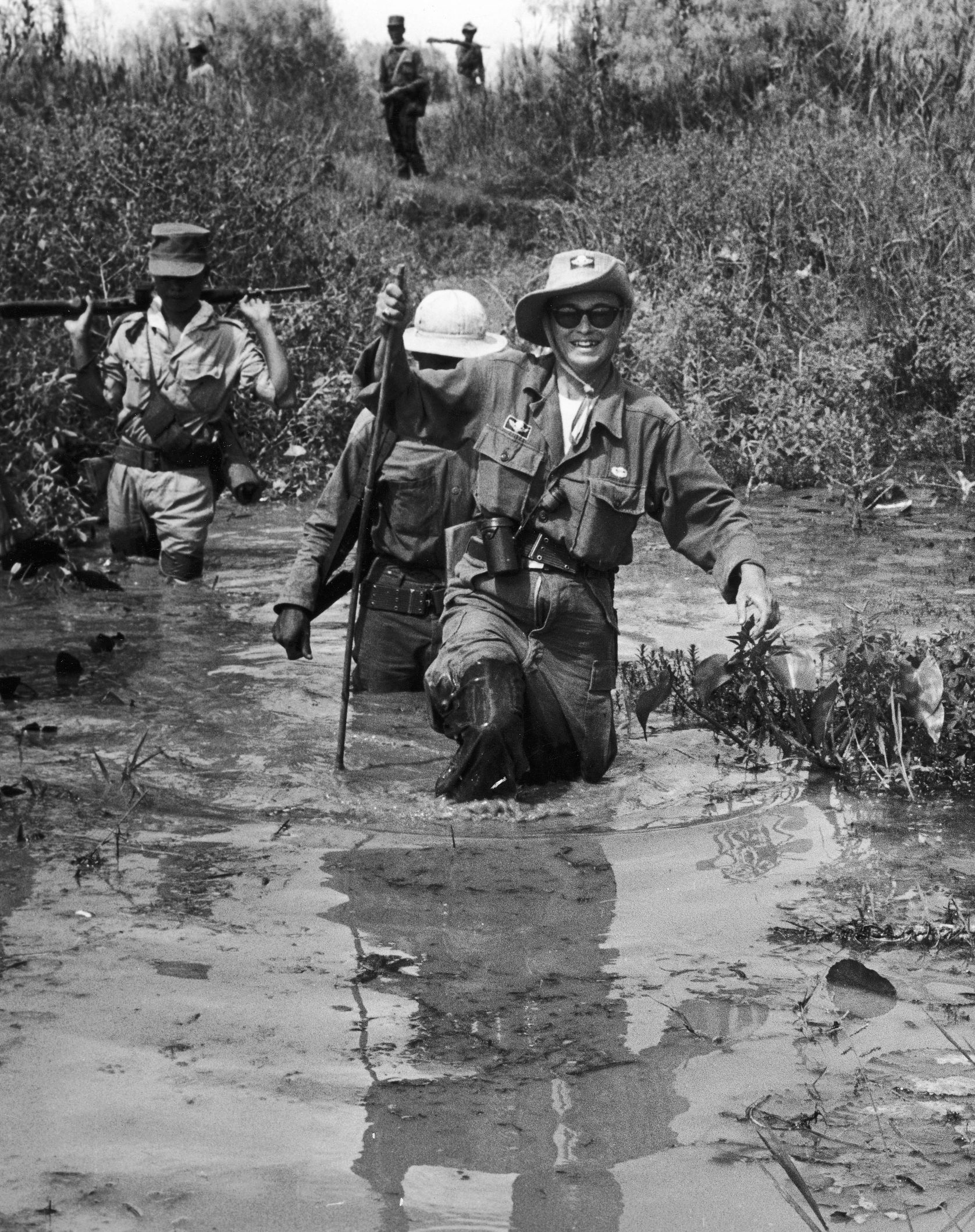
When it was time to go, she grabbed her parachute. A propeller plane whirred to life at the end of the tarmac. The unit’s corporal took her hand and hoisted her in. They took off as the sun slipped beneath the horizon. Below spread Vietnam’s lush jungle canopy, and ahead, a clearing. The bright lights in the fuselage dimmed to orange, allowing their eyes to adjust to the night. The corporal opened the door; the jump light turned from red to green, and the first men in their unit disappeared into the dark. Dickey checked the straps on her parachute and took a deep breath.
Odds were that one among their number would be wounded or killed. But she could not turn back now, not when she had come so far and when there was still so far yet to go. Besides, she knew no other way of life, no other purpose than reporting on the truth, no matter how deeply buried, no matter how difficult to accept. The corporal motioned for her to stand. Dickey took her place at the door, looked into the unknown, and felt herself enveloped by the slipstream of history once more.

